Focus Paralane2 9.8 e-bike review
Focus pops a motor in its endurance bike for extra oomph on the hills
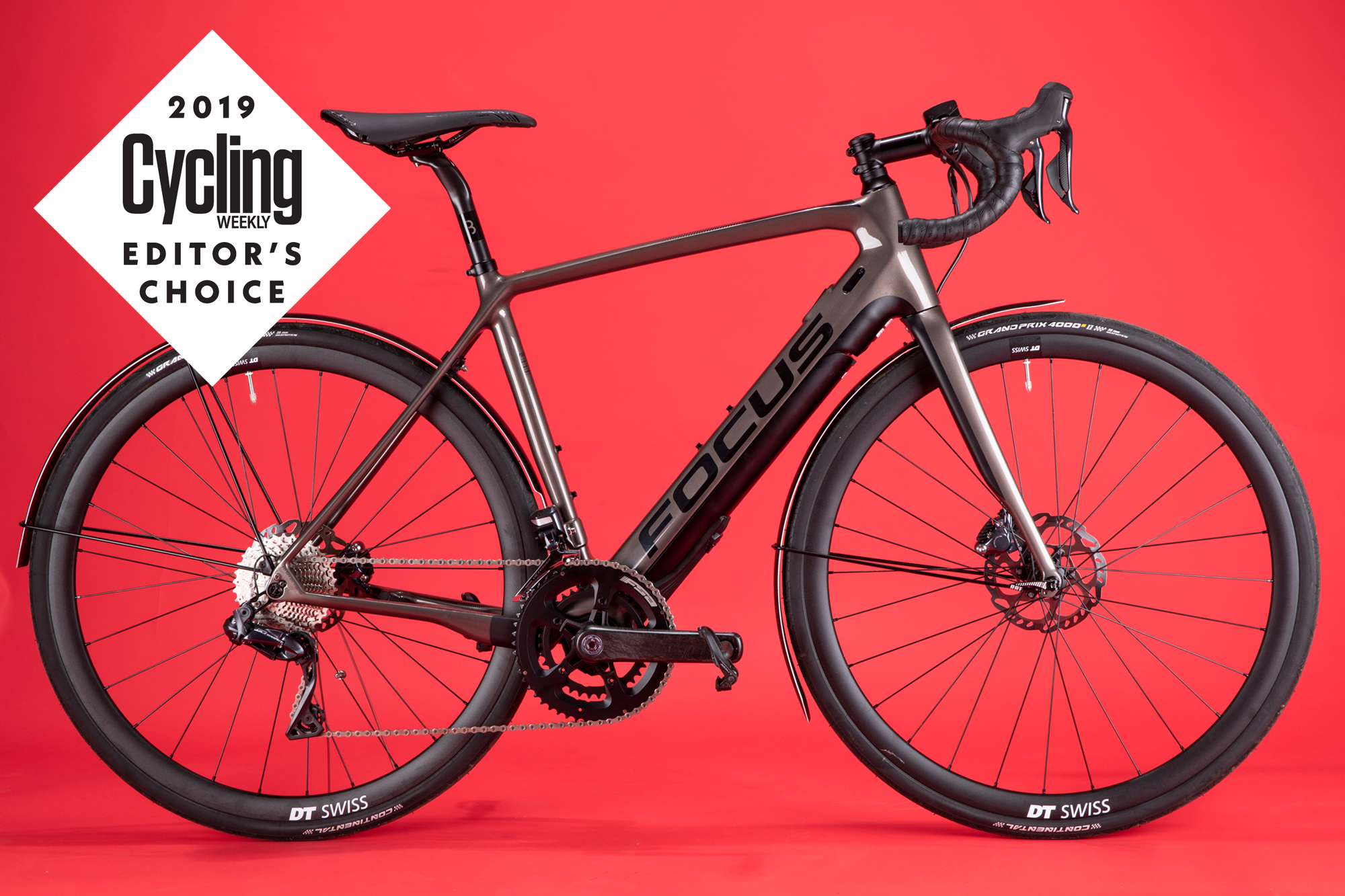
The Focus Paralane2 provides a quality ride. Its Fazua motor provides enough push to help on hills without taking over, so you still feel as if you’re having to do some work. There’s plenty of range, with a large – if heavy – battery and Focus has adopted wheel standards to cope with the extra power.
-
+
Extra push without too much extra weight
-
+
Motor and battery well integrated into frame
-
+
Can switch assistance or remove the battery if not required
- +
-
-
Road Boost axles limit aftermarket wheel choice
-
-
Motor only kicks in below 25kph
-
-
Battery does not lock into the frame
- -
You can trust Cycling Weekly.

Innovative as always, Focus were one of the first brands to not only utilise Fazua’s clever removable motor and battery system but also deliver a proper performance based e-road bike with the Paralane2. It delivers a realistic ride, one that you still have to work for, and this year’s Editor’s Choice really wouldn’t be complete without it.
The Focus Paralane2 (that’s “squared” not “two”) is one of a new breed of e-bikes based on a performance road bike. Whereas the original e-bikes were heavy urban machines, these newer bikes often have carbon frames and integrate the battery and motor neatly into the frame, so that they’re less intrusive.
Other manufacturers with this type of bike include Wilier and Orbea. Ribble too has recently launched an e-road bike. All three are based on the ebikemotion rear hub motor, with a battery in the down tube.
Focus has used a different system with the Focus Paralane2, with the Fazua motor housed in the bottom bracket shell and providing input through the cranks. It’s the same system as used by Pinarello amongst others.
The power
With any e-bike it’s worth noting that in Europe assistance is limited to below 25kph. Many road riders will be managing more than this on the flat, so the motor won’t be providing any power. In the US, assistance can be provided up to a more realistic 32kph/20mph.
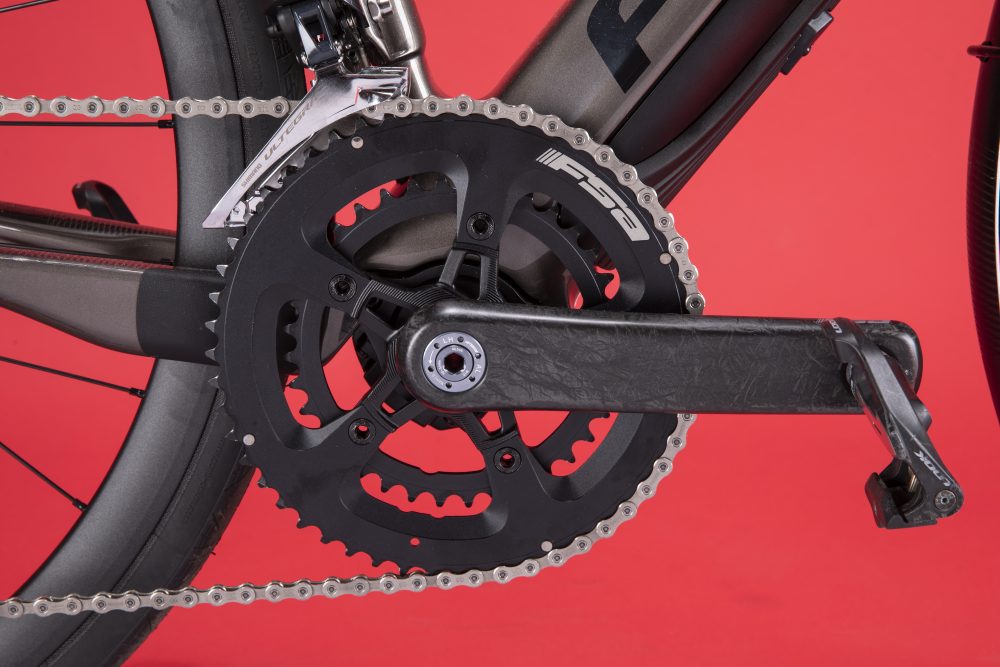
The Focus Paralane2’s motor is designed so that it doesn’t add any resistance when it’s not operating. But it’s only likely that it will kick in on uphill segments or if you’re riding into a headwind. Then it will add up to 250 watts to your power output, dependent on assistance level selected, so there’s a lot of extra power on tap.
The Focus Paralane2’s battery is a 250Wh number which clicks into the underside of the down tube. This results in quite a chunky looking profile, particularly width-wise. There’s a button on the top of the down tube to release it, which you need to do to plug it in and charge it. Fazua’s battery can’t be locked to the bike, so it’s at potential risk of theft.
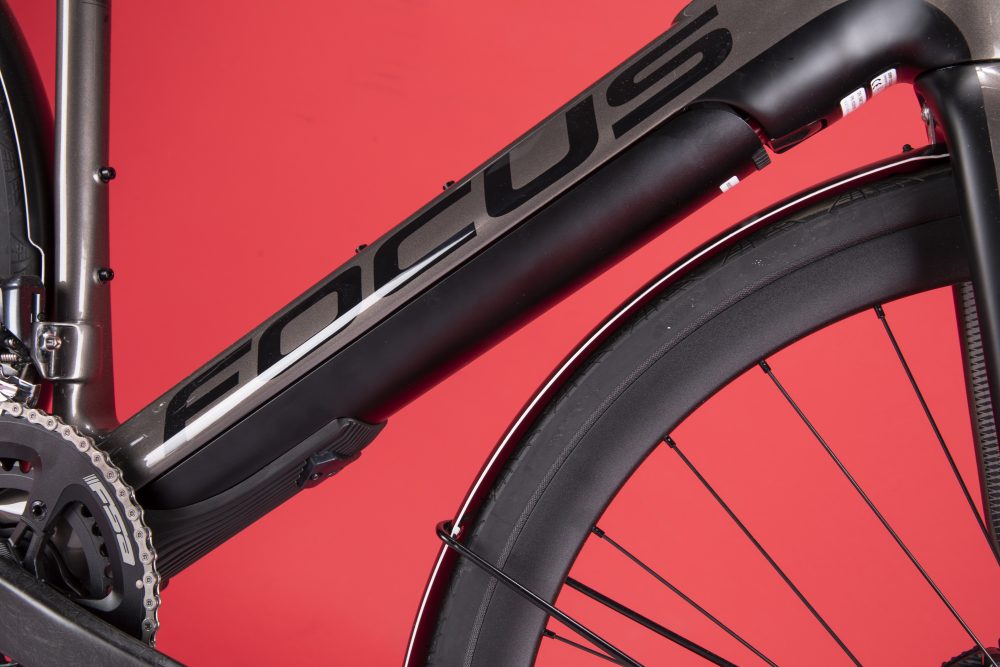
You can part drop the battery to expose the charge port, its charge level LEDs and on/off switch, but this requires that you turn the bars a bit to get the front wheel out of the way. I found it easier to just take it out completely to charge.
The battery is a chunky beast and alone weighs 3.3kg. It has a magnetic connection to the plug on the charger and a series of green LEDs on its end to show you its charge status.
If you decide that you can do without the motor, you can easily remove the battery. The Paralane2 looks a bit odd without it, but functions just fine and the bike’s weight drops to around 10kg. There’s a cover coming that will let you fill in the gap in the frame.
There’s a small controller for the motor that sits unobtrusively on the bar top and also indicates battery charge level via a series of LEDs. There are just three buttons: one to turn on the electrics, another to increase assistance level and a third to decrease it.
Fazua is working on an app, to pair with the controller via Bluetooth, with functions including battery monitoring, navigation, and viewing and sharing your ride stats.
The frame and components
Focus has used its Paralane endurance bike as the starting point for the Focus Paralane2. That’s most evident in the rear triangle, which has a similar arrangement to the original Paralane chainstays with a flattened profile and bowed seatstays. It’s a good move, as we really rated the Paralane’s rear end compliance.
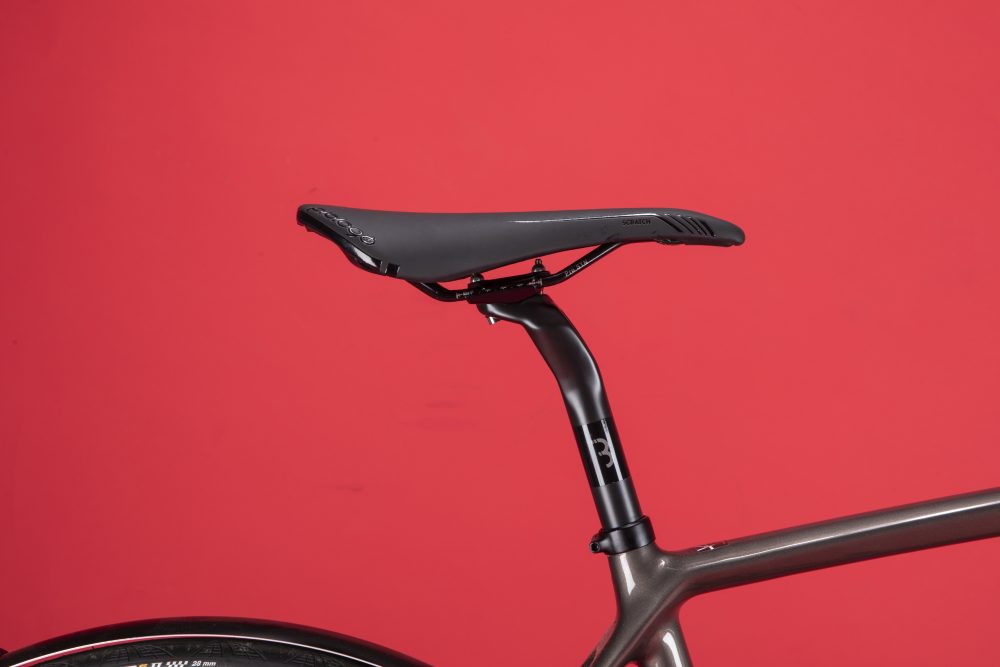
That’s helped by the BBB CPX Plus carbon seatpost. Its narrow diameter and split head design helps add extra compliance at the saddle. Prologo’s K3 is a comfortable design too, with the right degree of padding for many miles on the road.
>>> Focus bikes: which model is right for you?
Like the Paralane, the head tube isn’t too long either, with the longer fork blades adding extra tyre clearance and increasing the bike’s stack. The front brake hose is routed inside the left fork leg for a neat, protected run to the brake caliper.
The Focus Paralane2 9.8 has a Shimano Ultegra Di2 drivetrain with an FSA Octalink semi-compact chainset with carbon crank arms meshing to the motor’s spindle. There’s plenty of low range even without the motor to help you, as Focus fits an 11-34 cassette.
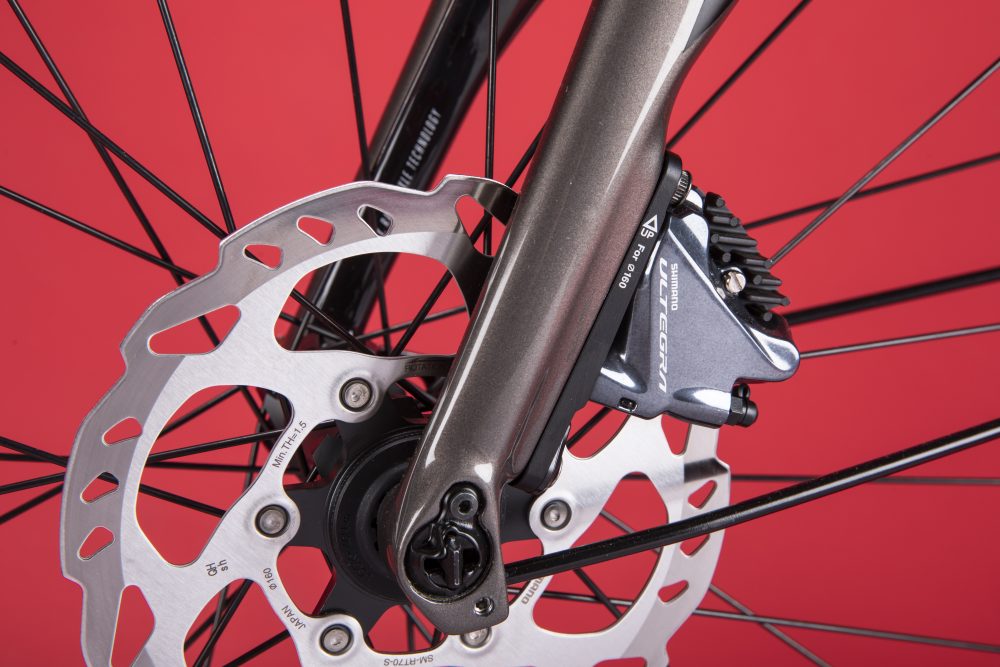
Focus adds DT Swiss RR521 Spline DB 32mm deep alloy wheels to the Focus Paralane2. Tyres are 28mm Continental GP4000 S II, although there’s frame clearance for tyres up to 35mm, so you could fit more knobbly tyres for some off-road action. There are also clearance and hidden mounting points for mudguards, which ship with the bike.
The wheels run on thru-axles with Focus’s quick release RAT Evo II axle system. This lets you get the wheel off in double-quick time relative to a conventional thru-axle, which needs to be unscrewed.
But Focus has also increased the thru-axle length. Its Road Boost axles are 110x12mm at the front and 148x12mm at the rear. Mimicking MTB thru-axles, they allow the spokes to have a wider stance for a potentially stronger wheel, to handle the extra power you and your motor are now putting through them.
Made by Fazua, the Focus Paralane2’s motor results in a 6mm wider bottom bracket shell than on a standard road bike. Focus says that Road Boost pushes the cassette out by 3mm and so offers a better drivetrain geometry, leading to a quieter, more durable chainline.
The flip side of Road Boost is that if you do want to replace your wheels, there are currently few options out there. This may be the next big thing though, as the new Mason ISO uses Hunt 650b wheels that run on Boost axles.
Riding the Focus Paralane2
There are three assistance levels on the Focus Paralane2. Stick to the green level in which it starts up and you can feel the extra push from standing and on uphills. But it’s never obtrusive and cuts in and out gently as your speed increases and decreases.
The motor is pretty quiet and is only really noticeable when it kicks up the power on steep uphills; there’s not the whine that you get from Bosch’s mid-mounted unit and it doesn’t drag you along to the extent that the Bosch motor does.
Push the assistance level up to the top, red 250 watt level (there’s a blue level between this and green) and you really start to feel the push. Long draggy small ring ascents westwards to the Chilterns Ridge become… long draggy large ring ascents.
In fact, if you suppress the tendency to drop to the small ring when you see a hill coming and brazen it out in the large ring, the Focus Paralane2 will pull you up pretty much anything without using the front mech. There’s a similar effect even with the green level of assistance. You still need to put work in to keep moving though, so you’re not getting a free ride.
Battery life is pretty good and will comfortable get you around a hilly Sunday morning ride – even on the highest level of assistance it should in theory be able to keep going for ten hours. Once battery level gets below around 20%, assistance level is gradually reduced, so you won’t suddenly be left powerless.
The battery will go into deep sleep after a period of 8 hours of non-use and can only be reawakened by dropping it out of the frame and pressing its on button. Before I worked this out, I ended up taking an unassisted ride. On the flat and descents, you can get along quite nicely on the Focus Paralane2 without the motor.
There’s the gear range to crawl up climbs motorless too, although with the bike’s 13kg weight I didn’t break any KOMs and this does feel like hard work. But it means that you could get yourself home reasonably comfortably if you did run out of juice mid-ride.
It’s been damp during the test period for the Focus Paralane2. Road spray tends to throw up muck that gets into the groove between the battery and the down tube, so that there’s more clean-up required than with a seamless down tube. The battery has cooling grooves built into the bottom end, which also collect muck.
Despite the extra weight you’re carrying around, the Shimano disc brakes and 28mm Conti tyres are more than up to the job of slowing you down and maintaining grip, even in damp winter conditions.

Ride quality is as you’d expect from Focus’s endurance Paralane, with excellent comfort levels both at the rear and the bars. The wide tyres and in-built compliance areas mean that you won’t give up due to discomfort before the battery does.
Buy now: Focus Paralane2 9.8 for £6059 at Sigma Sport
Value
At £6399, the Ultegra Di2 equipped Focus Paralane2 9.8 is not cheap, although it’s worth noting that a non-electric Paralane with Ultegra Di2 costs £4099. The Paralane2 range is priced from £3599 up to £9299 for the all-singing Dura-Ace Di2 specced 9.9.
But with the Paralane2 9.8, you are getting an excellent spec and Focus has thought carefully about what’s required to convert its endurance Paralane into an e-bike.
If you’re after an e-bike that looks and handles not too unlike a normal road bike, there are still only a few options out there and the Focus Paralane2 is amongst the best available.

Thank you for reading 20 articles this month* Join now for unlimited access
Enjoy your first month for just £1 / $1 / €1
*Read 5 free articles per month without a subscription

Join now for unlimited access
Try first month for just £1 / $1 / €1
Get The Leadout Newsletter
The latest race content, interviews, features, reviews and expert buying guides, direct to your inbox!
Paul started writing for Cycling Weekly in 2015, covering cycling tech, new bikes and product testing. Since then, he’s reviewed hundreds of bikes and thousands of other pieces of cycling equipment for the magazine and the Cycling Weekly website.
He’s been cycling for a lot longer than that though and his travels by bike have taken him all around Europe and to California. He’s been riding gravel since before gravel bikes existed too, riding a cyclocross bike through the Chilterns and along the South Downs.
-
 Man hands himself in to Belgian police after throwing full water bottle at Mathieu van der Poel during Paris-Roubaix
Man hands himself in to Belgian police after throwing full water bottle at Mathieu van der Poel during Paris-Roubaix30-year-old was on Templeuve-en-Pévèle cobbled sector when television pictures showed the bottle hitting him in the face
By Tom Thewlis Published
-
 'I'll take a top 10, that's alright in the end' - Fred Wright finishes best of British at Paris-Roubaix
'I'll take a top 10, that's alright in the end' - Fred Wright finishes best of British at Paris-RoubaixBahrain-Victorious rider came back from a mechanical on the Arenberg to place ninth
By Adam Becket Published
-
 'This is the furthest ride I've actually ever done' - Matthew Brennan lights up Paris-Roubaix at 19 years old
'This is the furthest ride I've actually ever done' - Matthew Brennan lights up Paris-Roubaix at 19 years oldThe day's youngest rider reflects on 'killer' Monument debut
By Tom Davidson Published